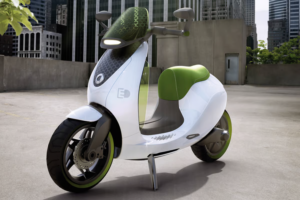How Airport Parking Works

Airports began as a simple connection between the ground and the sky. Travellers were frequently dropped off because parking was limited. Paid parking lots with security and lighting were introduced in Cleveland in the 1950s. As air travel became more common and airports grew into bustling hubs, these parking lots became an essential component of airport design.
As the number of travellers increased, so did the variety of options. Passenger fees were the primary source of revenue for airports in the early days. Economic trends and security concerns have posed challenges to this business model over the last two decades. As a result, airports have evolved into more than just transfer points. To diversify their revenue streams, many airports now offer shops, restaurants, and services. Airport parking lots must adapt to new passenger movement patterns as usage, security, and technology evolve.
How airport parking works
1. Drop-off and pick-up zones
Drop-off and pick-up zones are close to the terminal and necessitate the use of curb space. Vehicles may stand or park for a short period, usually 15 minutes. This area is used not only by private cars but also by valets, shuttles, limos, taxis, and ride-sharing services such as Uber and Lyft. This front-of-terminal space is also served by transit in some airports.
Drivers spend less time in departure (drop-off) zones than in arrival (pick-up) zones. Dwell time is the amount of time a vehicle occupies a parking space. Shuttles, taxis, and private vehicles typically only require enough time to unload luggage and say good-by at the curb. Dwell time has decreased as more people use wheeled, carry-on luggage, eliminating the need for carts.
2. Lots of cell phphonesaiting
The cell phone waiting lot is a modern airport innovation. These lots reduce vehicle dwell time in passenger pick-up areas. Cars are waiting to pick up passengers awaiting a distance from the main airport until their passengers have disembarked and collected their luggage. When the travellers are ready for pick up, he or she texts or calls this; service is usually free, and it eliminates the need for cars to wait at the curb. These lots, however, can compete with on-airport short-term parking.
3. Parking for a limited time
Short-term parking is usually available in a multi-level parking garage near the terminal. It charges the highest hourly rate for parking. It is frequently the choice of those who are escorting those they are dropping off or who are coming into the terminal to meet their party upon arrival.
Airports that are becoming more than your transfer points may have restaurants, services, or shops open to the public. Making short-term parking more affordable is, thus, sometimes in the best interests of the airport. A group may arrive early to watch the planes and eat, pick up gifts and use airport services. Airports are adding viewing areas and special events to attract visitors.
Conclusion.
When airport parking Bristol and airport parking Birmingham you should look into the things listed above to help you out.





